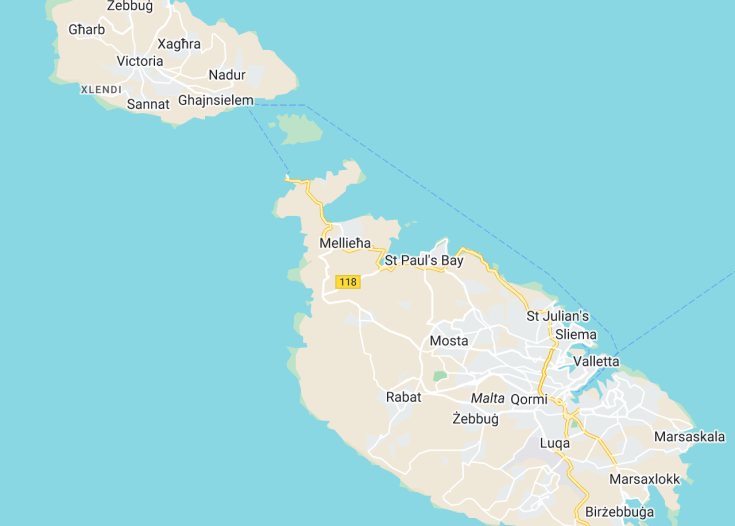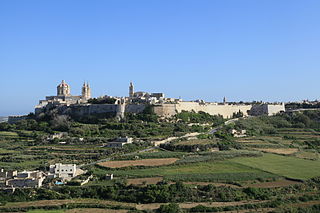Located at the crossroads of civilizations, Malta is an enchanting Mediterranean archipelago boasting an intricate history spanning millennia. Its islands weave together tales of knights, ancient temples, and maritime adventures, complemented by captivating landscapes, sun-kissed beaches, and bustling cityscapes. This unique blend ensures a memorable journey for every traveler.
Indulge in Malta’s culinary delight: ‘pastizzi’. These pastries, filled with ricotta or peas, epitomize local flavors and are a must-try.
Plan a visit during Malta’s ‘Festa’ season to immerse yourself in vibrant village feasts, showcasing rich traditions and festivities.
Malta: A Mediterranean Gem
| Capital | Valletta |
| Time in Malta | Central European Time (CET+1) |
| Language spoken | Maltese, English |
| Population | 514,564 (source: World Bank) |
| Religion | Roman Catholicism (96%) Other (4%) |
| Currency | Euro (€, EUR) |
| Airports | Malta International Airport Mosta Heliport |
Malta is a captivating Mediterranean destination with a rich history and stunning natural beauty. Known for its crystal-clear waters, ancient temples, and unique architectural gems, Malta offers a truly unforgettable experience for travelers.
Where is Malta located?
Located in the Mediterranean Sea, Malta is nestled between Sicily and the North African coast. This archipelago consists of three main islands: Malta, Gozo, and Comino. It is strategically positioned at the crossroads of Europe, Africa, and the Middle East.
What is Malta famous for?
Malta is famous for its ancient history and UNESCO World Heritage sites. The islands are home to Megalithic temples, some of which are older than the pyramids of Egypt. The medieval city of Mdina, also known as the “Silent City,” is a must-visit attraction. Malta is also renowned for its picturesque beaches, such as the Blue Lagoon in Comino and Golden Bay in Malta.
History
The history of Malta is a rich tapestry of civilizations and cultures that have left their mark on the island nation. Located in the central Mediterranean, Malta has a strategic position that has made it a target for various conquerors throughout the centuries.
Prehistoric Times
Malta’s history dates back to prehistoric times, with evidence of human habitation as early as 5200 BC. The earliest known inhabitants were the Neolithic people who built impressive megalithic temples, such as the temples of Ġgantija on the island of Gozo, which are among the oldest freestanding structures in the world.
Phoenician and Roman Period
In the 8th century BC, the Phoenicians, a seafaring civilization from the eastern Mediterranean, established trading posts on Malta. They were followed by the Romans, who conquered the islands in 218 BC. The Roman period saw the construction of several important structures, including the ancient city of Melite (now Mdina) and the famous Villa Romana del Casale in the town of Rabat.
Arab and Norman Rule
In 870 AD, Malta came under Arab rule after the Muslim conquest of Sicily. The Arab influence can still be seen in the language and architecture of the islands. In 1091, Malta fell under Norman rule as part of the Kingdom of Sicily. The Normans introduced feudalism and built palaces and castles, such as the Palazzo Falson and the Castello dei Conti in Birgu.
Knights of St. John and French Occupation
In 1530, Malta was granted to the Knights of St. John by Emperor Charles V of Spain. The Knights transformed Malta into a fortress island and built the city of Valletta, which is now a UNESCO World Heritage site. However, their rule was not without challenges. In 1798, Malta was occupied by Napoleon Bonaparte and became a French colony for a short period.
British Rule and Independence
In 1800, Malta became a British protectorate and remained under British rule for 164 years. The British constructed military fortifications and established a naval base, which played a crucial role during World War II. Malta gained independence from the United Kingdom in 1964 and became a republic in 1974.
Present Day
Today, Malta is a member of the European Union and has a thriving economy based on tourism, finance, and manufacturing. The island nation is known for its stunning coastline, historic sites, and vibrant cultural scene. It continues to attract visitors from around the world who come to explore its rich history and enjoy its picturesque landscapes.
Visit Malta
What to see and do in Malta
When visiting Malta, there are several attractions and activities that should not be missed:
- Explore the ancient megalithic temples, such as Ġgantija and Ħaġar Qim.
- Visit the fortified city of Valletta, with its impressive architecture and historic sites, including St. John’s Co-Cathedral and the Grandmaster’s Palace.
- Discover the medieval walled city of Mdina, also known as the “Silent City,” and take a walk along its narrow streets.
- Relax on the beautiful sandy beaches of Golden Bay and Mellieħa.
- Go diving or snorkeling in the crystal-clear waters of the Blue Grotto and the Azure Window.
- Take a boat tour to the picturesque island of Gozo and explore its charming villages, stunning cliffs, and the famous Azure Window (Note: The Azure Window collapsed in 2017, but the site remains a popular tourist attraction).
- Experience the vibrant nightlife in Paceville, with its numerous bars, clubs, and restaurants.
Events in Malta
Malta hosts various events and festivals throughout the year, offering visitors a chance to experience the vibrant culture of the island:
- The Malta International Fireworks Festival, held in April, showcases spectacular fireworks displays from local and international pyrotechnic teams.
- The Malta Arts Festival, held in July, features a diverse program of music, theater, dance, and visual arts performances.
- The Isle of MTV Malta Music Week, held in June, brings international music artists to the island for a series of free concerts and parties.
- The Valletta International Baroque Festival, held in January, celebrates Baroque music with performances in historic venues.
- The Malta Jazz Festival, held in July, attracts renowned jazz musicians from around the world for a series of concerts.
Best time to visit Malta
The best time to visit Malta is during the spring (April to June) and autumn (September to November) seasons. During these months, the weather is pleasant, with mild temperatures and less tourist crowds. It is also a great time to enjoy outdoor activities and explore the historical and cultural sites of Malta.
Is Malta worth visiting?
Without a doubt, Malta is worth visiting. This small island nation offers a unique blend of history, culture, and natural beauty. From its ancient temples and fortified cities to its stunning coastline and vibrant festivals, Malta has something for every visitor. The rich history and architectural wonders, such as Valletta and Mdina, will captivate history enthusiasts, while the crystal-clear waters and sandy beaches will delight beach lovers. Additionally, the warm and welcoming Maltese people make visitors feel right at home. Whether you are interested in history, culture, or simply enjoying the sun and sea, Malta is a destination that should not be missed.


















